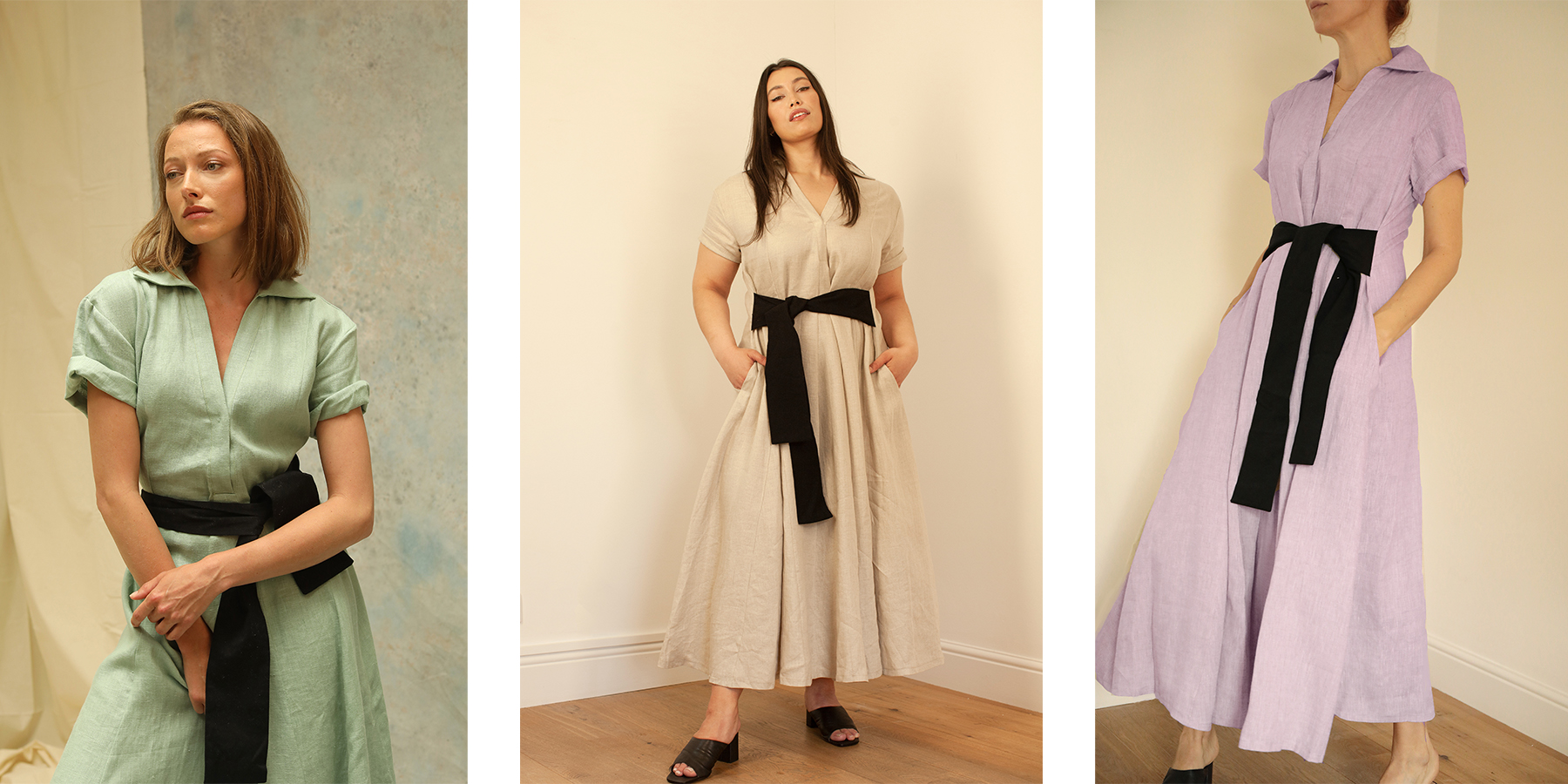ALL THINGS LINEN
''But linen wrinkles so much, is it even worth it?''
It is totally worth it! Here are 3 reasons why linen is one of the best textiles you can choose to wear, and few pro tips how to take care of your linen garments.


What is linen?
Linen is a natural fibre derived from the flax plant (Linum usitatissimum), a crop that has been cultivated for thousands of years for its valuable fibres. Historical evidence shows that humans began using linen for textiles over 36 thousand years ago, making it one of the oldest known textiles in the world. The fibres are extracted from the flax plant's stem, spun into yarn, and woven into fabric. The result is a textile renowned for its strength, durability, and distinctive texture.
Where is Linen grown?
The majority of the world's flax cultivation takes place in regions with temperate climates, such as Belgium, France, the Netherlands, and Ireland. These regions offer the ideal conditions for flax cultivation, including well-drained soil, ample rainfall, and moderate temperatures. Ireland, in particular, has a rich history of linen production, with Belfast emerging as a prominent centre for the industry. In its heyday, Belfast was affectionately known as "Linenopolis" due to its dominance in linen manufacturing. The city's mills and factories played a pivotal role in shaping the global linen trade, with Belfast linen renowned for its quality and craftsmanship. While the industry has evolved over time, Belfast's legacy as a hub of linen production remains an integral part of its cultural heritage.
Why Choose Linen?
Linen's appeal lies not only in its natural beauty but also in its numerous practical benefits. As a textile, linen is prized for its breathability, moisture-wicking properties, and hypoallergenic qualities. It's an excellent choice for clothing, bedding, and home textiles, offering unparalleled comfort and style. Plus, linen's sustainability credentials make it a favourite among eco-conscious consumers who value ethical and environmentally friendly materials.


3 reasons to choose linen
1.Breathable Comfort
Linen's unique properties make it an ideal choice for clothing, particularly in warm climates or during the summer months. Renowned for its breathability, linen allows air to circulate freely through the fabric, keeping the body cool and comfortable even on the hottest of days. Its moisture-wicking abilities draw perspiration away from the skin, leaving you feeling fresh and dry throughout the day. Whether you're lounging at home or exploring the great outdoors, linen fabrics offer unparalleled comfort and breathability.
2. Sustainable Sensibility
At the heart of linen's appeal lies its sustainability. Derived from the flax plant, linen is a natural fibre that boasts impressive eco-friendly credentials. Unlike synthetic fabrics that rely on petrochemicals and contribute to pollution, linen is cultivated from renewable flax crops that require minimal water and pesticides. Its biodegradability ensures that at the end of its lifecycle, linen returns to the earth without leaving a lasting environmental footprint.
3.Longevity of Linen Fabrics
Linen fabrics are renowned for their durability and longevity. With proper care, linen garments and textiles can withstand the test of time, retaining their beauty and integrity for years to come. Unlike other fabrics that may lose their shape or degrade over time, linen develops a soft, lived-in patina that enhances its allure. From bedding to clothing, linen fabrics offer enduring quality and style, making them a timeless investment for any wardrobe or home.


''But it wrinkles so much..''
Here are few Pro Tips on how to soften your linen garments and have them with less wrinkles;
1. Ditch the Softener, Embrace Vinegar
Tired of stiff, wrinkled linen garments? Say goodbye to fabric softener and hello to white vinegar. While it may sound unconventional, adding a splash of white vinegar to your laundry can work wonders for softening linen fabrics without leaving behind any unpleasant odours. Simply substitute fabric softener with white vinegar in your laundry routine, and watch as your linen garments emerge from the wash feeling luxuriously soft and wrinkle-free. Trust us, your linens will thank you for it.
2. Baking Soda Boost: Soften and Refresh
Looking for another natural solution to soften your linen garments? Enter baking soda. This versatile ingredient helps to neutralize odours and soften fabrics through gentle exfoliation of the fibres. By loosening the bonds between dirt, grime, and the fabric, baking soda allows them to be easily washed away during the rinse cycle. This not only leaves your garments feeling softer but also helps to reduce wrinkles and improve overall fabric texture. With baking soda, you can achieve soft, fresh linens without the need for harsh chemicals or artificial fragrances.
3. Water Spritz: Relax and Refresh
For an extra boost of softness, try spritzing your linen garments with water before ironing or wearing them. Linen fibres are traditionally woven while wet, so they naturally love water. By spraying a small amount of water on your linen garments, you can help to relax the fibres further, making them even softer and more pliable. This simple trick can also help to reduce wrinkles and give your linens a fresh, just-laundered feel. Embrace the natural properties of linen and enjoy the ultimate in softness and comfort.


